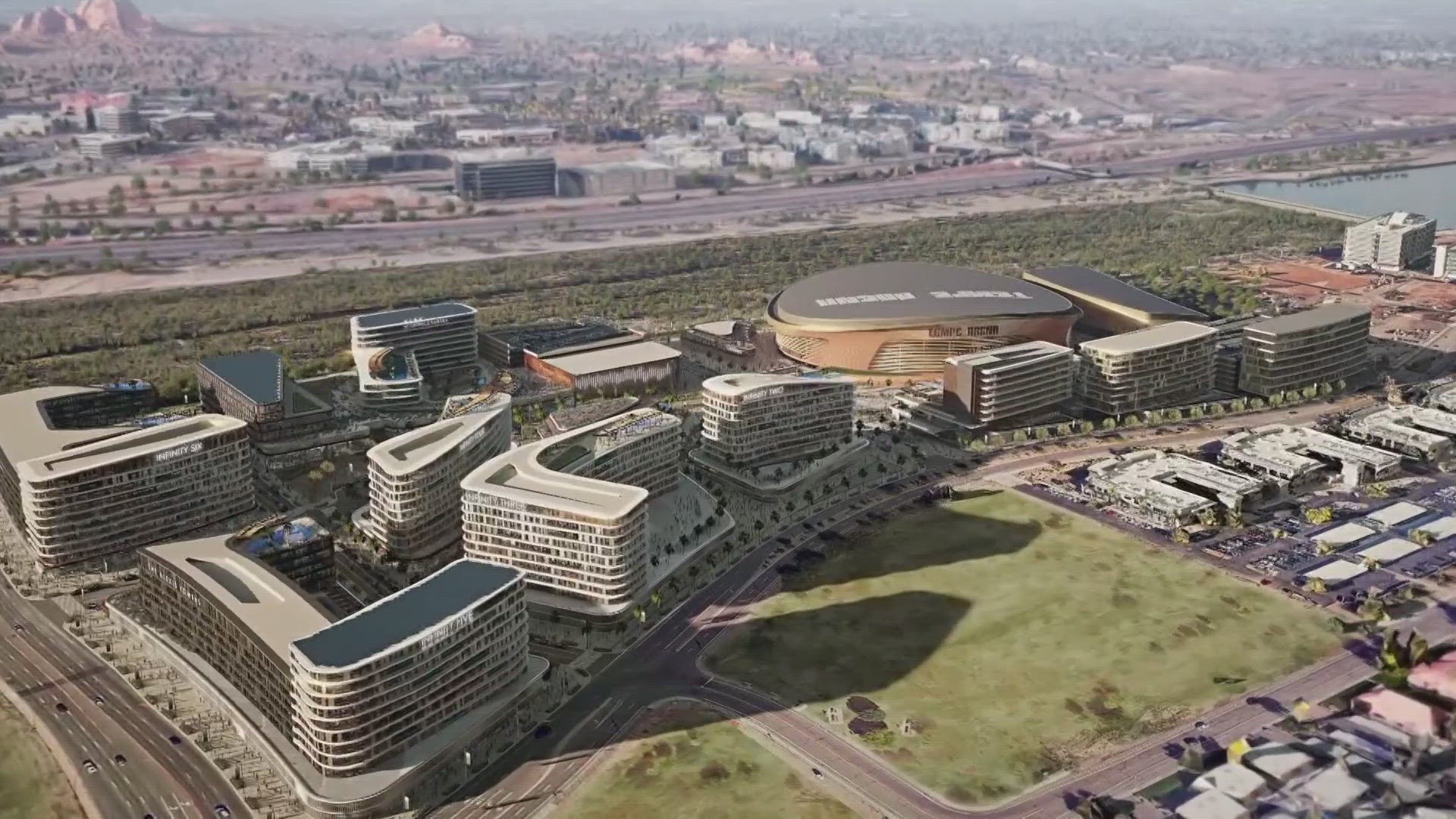TEMPE, Ariz. — A stretch of land caught in the middle of two Valley cities has fueled resentment, anger and legal campaigns for decades.
The next chapter in that tumultuous history was just written.
The area between Tempe Town Lake and Phoenix's Sky Harbor Airport kicked off its latest legal battle Tuesday afternoon. Phoenix filed a lawsuit against Tempe claiming its new complex, which sits on that land, goes against a previous agreement between the two cities.
The $2.1 billion proposed Tempe Entertainment District would include the Arizona Coyotes' new stadium, retail stores, and restaurants in the same vein as Glendale's Westgate.
But, Phoenix says its issue is only with the apartments planned for Tempe's district, claiming their inclusion would violate an agreement to mitigate noise issues from the airport.
The move echoes a similar legal fight between the two cities hashed out over 20 years ago; a fight also fueled by a proposed stadium on the same land. Here's the Valley history you should keep in mind as the legal battle moves forward.
Tempe was almost the Arizona Cardinals' home nest
Valley residents were in the midst of a long and drawn-out battle over which city would house the state's only NFL team.
READ THE FULL STORY: The controversy-filled history behind Arizona's Super Bowl stadium
The Cardinals had a home at ASU's Sun Devil stadium between 1987 and 2000 but were pushing hard for a stadium of their own. Rumors spread that the team was on the verge of moving to Texas if they didn't get a new, bigger home.
In 2001, Tempe made sure to catch the eye of the state board made to find a home for the stadium, spurred by worry they would lose the team to a different Valley city, along with the thousands of dollars and national exposure the team brought with it. The city proposed six sites along Route 202 near the then-newly filled Tempe Town Lake.
The process eventually led to Tempe being one of the stadium's top contenders and, after winning an endorsement from the team itself, was picked to be the team's home.
However, Tempe's dream would end soon after due to a conflict between the stadium's site and nearby Sky Harbor.
Tempe's plans listed as an "air-traffic hazard" by the FAA
A new issue emerged before the city could even break ground on the stadium site: the structure would potentially cause dangers for airplanes.
Phoenix's Sky Harbor International Airport expressed its concern two days after the site was awarded to Tempe, saying the stadium's location and height would "severely impact" arriving planes. At the stadium's highest point, planes would only be flying 170 feet overhead.
"One hundred seventy feet is not enough clearance at a critical time of flight, such as arrival," Suzanne Luber, a spokeswoman with Sky Harbor, told the East Valley Tribune on Feb. 16, 2001.
The Federal Aviation Administration (FAA) would later confirm the state board never asked whether the stadium would impact flight travel, even though the site lay directly east of Sky Harbor's longest runway.
Officials tried to appease the FAA by lowering the stadium by 36 feet. It didn't work.
Five months after Tempe won the site, the city lost it when the site was officially labeled a "hazard." While the FAA couldn't force the stadium's construction to stop, the designation would open Tempe and the state up to lawsuits if any issues arose after the stadium was built.
Officials didn't want to take that risk and the stadium's construction was halted.
Ultimately, the stadium would end up in Glendale, but city and state officials had a long road before that was finalized. Read the full history of the controversial Cardinals stadium here.
Latest Arizona news
Catch up on the latest news and stories on our 12News YouTube playlist here.

